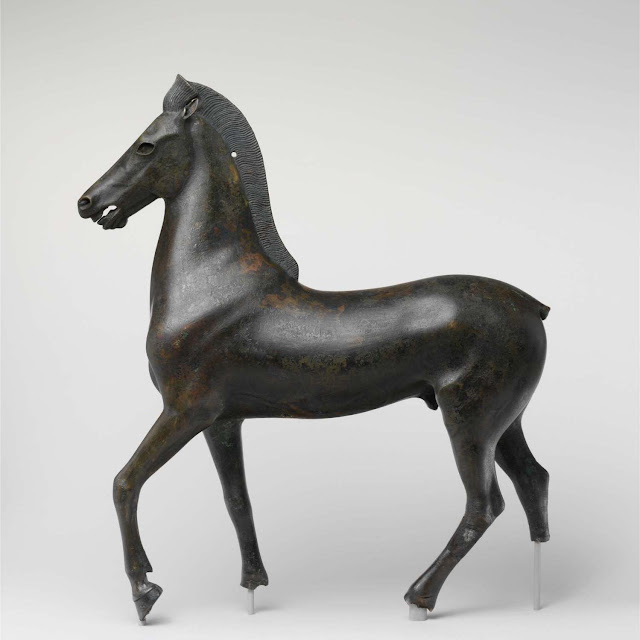 |
| Barberini Faun ca. 220 BC Hellenistic marble sculpture Glyptothek, Munich |
 |
| Aphrodite 2nd century BC Greek marble sculpture Metropolitan Museum of Art, New York |
 |
| Colossal torso 160-130 BC Hellenistic marble sculpture British Museum |
"The Romans themselves bore so great reverence for these arts that besides the respect that Marcellus, in sacking the city of Syracuse, commanded to be paid to a craftsman famous in them, in planning the assault of the aforesaid city they took care not to set fire to that quarter wherein there was a most beautiful painted panel, which was afterwards carried to Rome in the triumph, with much pomp. Thither, having, so to speak, despoiled the world, in course of time they assembled the craftsmen themselves as well as their finest works, wherewith afterwards Rome became so beautiful, for the reason that she gained so great adornment from the statues from abroad more than from her own native ones; it being known that in Rhodes, the city of an island in no way large, there were more than 30,000 statues counted, either in bronze or in marble, nor did the Athenians have less, while those at Olympia and at Delphi were many more and those in Corinth numberless, and all were most beautiful and of the greatest value. Is it not known that Nicomedes, King of Lycia, in his eagerness for a Venus that was by the hand of Praxiteles, spent on it almost all the wealth of his people? Did not Attalus the same, who, in order to possess the picture of Bacchus painted by Aristides, did not scruple to spend on it more than 6,000 sesterces? Which picture was placed by Lucius Mummius in the temple of Ceres with the greatest pomp, in order to adorn Rome."
– Giorgio Vasari, from the preface to his Lives of the Painters, Sculptors and Architects (1564), translated by Gaston du C. de Vere (1912)
 |
| Grave-stele of family group ca. 360 BC Greek marble relief Getty Museum, Los Angeles |
 |
| Nereid 390-380 BC Marble statue from Nereid Monument in Lycia British Museum |
 |
| Ionic Youth 1st century BC Eastern Greek marble statue Prado, Madrid |
 |
| Reclining Dionysos from the East Pediment of the Parthenon 447-432 BC marble British Museum |
 |
| Funerary Lion ca. 400-390 BC Greek marble statue Metropolitan Museum of Art, New York |
 |
| Temple column drum with relief figures 340-320-BC Greek marble from Ephesus British Museum |
 |
| Votive relief of horse and youth ca. 500 BC Greek marble Getty Museum, Los Angeles |
 |
| Head of Athena ca. 420 BC Greek marble Getty Museum, Los Angeles |
 |
| Venus 425-400 BC Greek marble from South Italy formerly Getty Museum (now repatriated) |
 |
| Horse late 2nd - early 1st century BC Hellenistic bronze Metropolitan Museum of Art, New York |
 |
| Eye ca. 5th-2nd century BC glass and bronze, from bronze statue Getty Museum, Los Angeles |